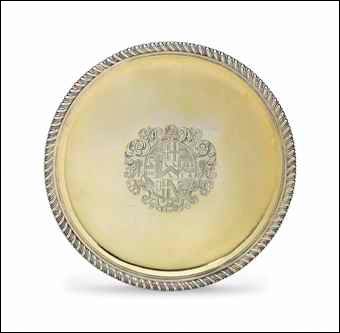Queen Anne silver-gilt 'tazza'
Pierre Platel
- Art Funded
- 2016
- Dimensions
- Diameter 35.6cm
- Vendor
- Christie's
The tazza was made in 1712 by Pierre Platel, a French Huguenot who fled France for England in 1685. In 1697 he was naturalised as a British citizen, and he entered his first mark as a goldsmith in London in 1699. Among PlatelÂ’s clients were the 1st Duke of Devonshire and George, Prince of Wales (later George III). The shape of the piece is circular, raised on a pedestal foot and decorated with a gadrooned rim. In the centre is the engraved crest of Theophilus Fairfax Johnson, who was born at Ayscoughfee Hall in 1790. The piece bears the hallmark 1712. A very similar crest appears on the Johnson Cup, a silver-gilt loving cup made by Platel in 1712 and acquired by the museum with the assistance of the Art Fund in 2008. It is not known who commissioned the companion pieces, but it may have been Maurice Johnson II (1688-1755), a notable antiquarian and founder of the Spalding GentlemenÂ’s Society. The pieces may later have been engraved to mark an important moment in the life of Theophilus Johnson, possibly his marriage to Millicent Anne Moore whose arms also appear on the crest. Ayscoughfee Hall was sold to the people of Spalding in 1898 and its contents auctioned off. These silver-gilt objects are now a valuable reminder of the family who once lived there.
Provenance
Gifted by Douglas Dillon to Metropolitan Museum of Art in 1983. The auction house has confirmed that the lot has been checked with the Art Loss Register.
